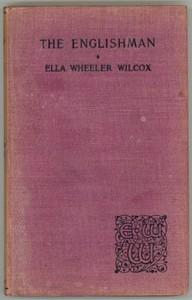Read this ebook for free! No credit card needed, absolutely nothing to pay.
Words: 29379 in 6 pages
This is an ebook sharing website. You can read the uploaded ebooks for free here. No credit cards needed, nothing to pay. If you want to own a digital copy of the ebook, or want to read offline with your favorite ebook-reader, then you can choose to buy and download the ebook.


: The Great Fortress : A chronicle of Louisbourg 1720-1760 by Wood William - Louisbourg (N.S.) History Siege 1745; Louisbourg (N.S.) History Siege 1758
Edition: 10
CHRONICLES OF CANADA Edited by George M. Wrong and H. H. Langton In thirty-two volumes
Volume 8
THE GREAT FORTRESS A Chronicle of Louisbourg 1720-1760
PREFACE Louisbourg was no mere isolated stronghold which could be lost or won without affecting the wider issues of oversea dominion. On the contrary, it was a necessary link in the chain of waterside posts which connected France with America by way of the Atlantic, the St Lawrence, the Great Lakes, and the Mississippi. But since the chain itself and all its other links, and even the peculiar relation of Louisbourg to the Acadians and the Conquest, have been fully described elsewhere in the Chronicles of Canada, the present volume only tries to tell the purely individual tale. Strange to say, this tale seems never to have been told before; at least, not as one continuous whole. Of course, each siege has been described, over and over again, in many special monographs as well as in countless books about Canadian history. But nobody seems to have written any separate work on Louisbourg showing causes, crises, and results, all together, in the light of the complete naval and military proof. So perhaps the following short account may really be the first attempt to tell the tale of Louisbourg from the foundation to the fall.
W. W.
THE LAST SEA LINK WITH FRANCE 1720-1744
The first French settlers in Louisbourg came over from Newfoundland, which had been given up to the British by the treaty. The fishermen of various nations had frequented different ports all round these shores for centuries; and, by the irony of fate, the new French capital of Cape Breton was founded at the entrance to the bay which had long been known as English Harbour. Everything that rechristening could do, however, was done to make Cape Breton French. Not only was English Harbour now called Louisbourg, but St Peter's became Port Toulouse, St Anne's became Port Dauphin, and the whole island itself was solemnly christened Ile Royale.
The shores of the St Lawrence up to Quebec and Montreal were as entirely French as the islands in the Gulf. But Acadia, which used to form the connection by land between Cape Breton and Canada, had now become a British possession inhabited by the so-called 'neutral French.' These Acadians, few in numbers and quite unorganized, were drawn in opposite directions, on the one hand by their French proclivities, on the other by their rooted affection for their own farms. Unlike the French Newfoundlanders, who came in a body from Plaisance , the Acadians preferred to stay at home. In 1717 an effort was made to bring some of them into Louisbourg. But it only succeeded in attracting the merest handful. On the whole, the French authorities preferred leaving the Acadians as they were, in case a change in the fortunes of war might bring them once more under the fleurs-de-lis, when the connection by land between Quebec and the sea would again be complete. A plan for promoting the immigration of the Irish Roman Catholics living near Cape Breton never got beyond the stage of official memoranda. Thus the population of the new capital consisted only of government employees, French fishermen from Newfoundland and other neighbouring places, waifs and strays from points farther off, bounty-fed engages from France, and a swarm of camp-following traders. The regular garrison was always somewhat of a class apart.
The French in Cape Breton needed all the artificial aid they could get from guns and forts. Even in Canada there was only a handful of French, all told, at the time of the Treaty of Utrecht--twenty-five thousand; while the British colonists in North America numbered fifteen times as many. The respective populations had trebled by the time of the Cession of Canada to the British fifty years later, but with a tendency for the vast British preponderance to increase still more. Canada naturally had neither men nor money to spare for Louisbourg; so the whole cost of building the fortress, thirty million livres, came direct from France. This sum was then the equivalent, in purchasing power, of at least as many dollars now, though the old French livre was only rated at the contemporary value of twenty cents. But the original plans were never carried out; moreover, not half the money that actually was spent ever reached the military chest at all. There were too many thievish fingers by the way.
The founders of Louisbourg took their time to build it. It was so very profitable to spin the work out as long as possible. The plan of the fortress was good. It was modelled after the plans of Vauban, who had been the greatest engineer in the greatest European army of the previous generation. But the actual execution was hampered, at every turn, by want of firmness at headquarters and want of honest labour on the spot. Sea sand was plentiful, worthless, and cheap. So it was used for the mortar, with most disastrous results. The stone was hewn from a quarry of porphyritic trap near by and used for the walls in the rough. Cut stone and good bricks were brought out from France as ballast by the fishing fleet. Some of these finer materials were built into the governor's and the intendant's quarters. Others were sold to New England traders and replaced by inferior substitutes.
Of course, direct trade between the opposing colonies was strictly forbidden by both the French and British navigation acts. But the Louisbourg officials winked at anything that would enrich them quickly, while the New Englanders pushed in eagerly wherever a profit could be made by any means at all. Louisbourg was intended to be the general rendezvous of the transatlantic French fishing vessels; a great port of call between France, Canada, and the French West Indies; and a harbour of refuge in peace and war. But the New England shipping was doing the best trade at Louisbourg, and doing it in double contraband, within five years of the foundation. Cod caught by Frenchmen from Louisbourg itself, French wines and brandy brought out from France, tobacco and sugar brought north from the French West Indies, all offered excellent chances to enterprising Yankees, who came in with foodstuffs and building materials of their own. One vessel sailed for New York with a cargo of claret and brandy that netted her owners a profit of a hundred per cent, even after paying the usual charges demanded by the French custom-house officials for what really was a smuggler's licence.
Free books android app tbrJar TBR JAR Read Free books online gutenberg
More posts by @FreeBooks


: The Duke of Gandia by Swinburne Algernon Charles - English drama; Alexander VI Pope 1431-1503 Drama; Borgia family Drama; Borgia Cesare 1476?-1507 Drama; Borgia Lucrezia 1480-1519 Drama; Italy History Drama


: The Hollow of Her Hand by McCutcheon George Barr - New York (N.Y.) Social life and customs Fiction; Murder Fiction; Mystery fiction





